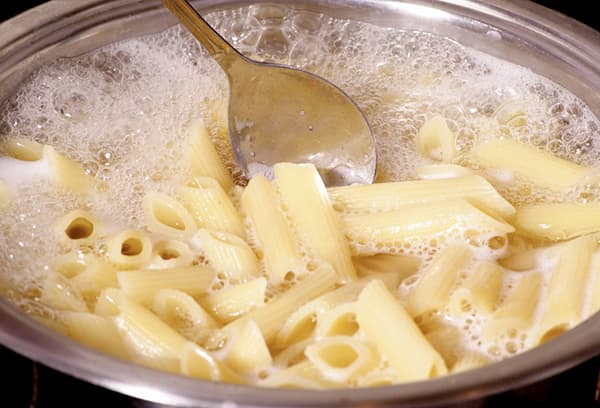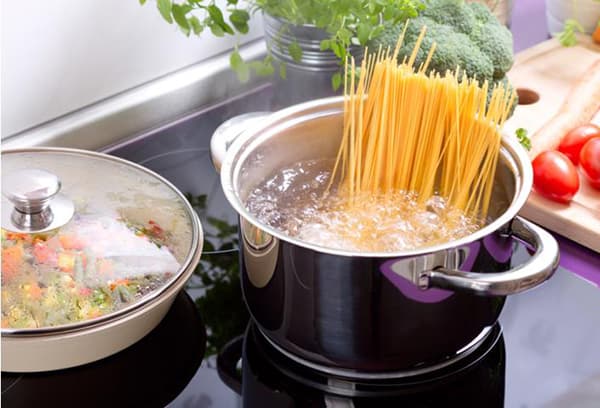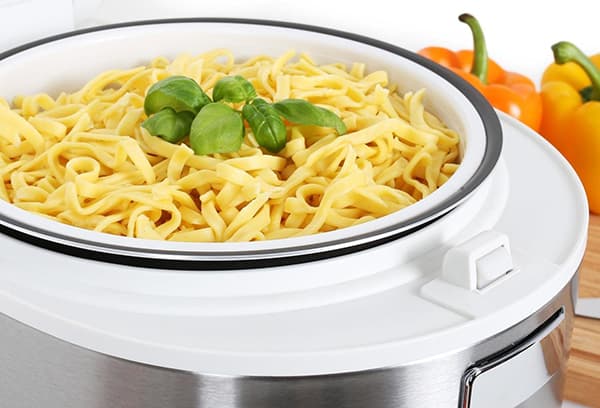How to properly cook different types of pasta in a saucepan and slow cooker?
Cooking is impossible without improvisation. Even simple pasta acquires an unsurpassed taste if you add various spices, cheese, sauces, eggs, mushrooms, meat... But at the same time, of course, there are unshakable fundamentals for preparing each dish - algorithms containing sequence, time, proportions, temperature preparations. There is such an algorithm for pasta. Next, we’ll tell you how and how long to cook pasta in a saucepan and slow cooker, how much water you need, and how best to flavor this delicious side dish.

Basics of "pasta science"
Pasta is a product that is both simple and complex. Many novice housewives are afraid to approach them: what if they boil down, turning into porridge, or stick together into one slimy lump?
Meanwhile, pasta is one of the most popular products on our table. How many dishes can you prepare with them:
- soups;
- Navy pasta;
- pasta with various sauces;
- various casseroles;
- lasagna;
- spaghetti;
- salads;
- pancakes, etc.
If you know some simple rules, follow the proportions and do not exceed the cooking time, there is nothing complicated in cooking pasta. For most dishes, pasta is cooked in a saucepan or slow cooker - whichever you prefer.
What should happen as a result of cooking? Soft, but somewhat elastic pasta, not overcooked, not lumpy, not soggy. Although al dente pasta is perhaps the only exception.They are supposed to be slightly undercooked.
What do you need to cook pasta? Regardless of whether you plan to cook them in a saucepan or a slow cooker, the initial ingredients are the same:
- the pasta itself;
- water;
- butter (just a little);
- salt.
Adding spices, cheese, sauces or other products depends on what kind of dish you want to get.
Subtleties of cooking on the stove
How to cook pasta correctly? The first thing you usually do when you are planning to cook pasta in a saucepan is bring the water to a boil. And here two main pitfalls await inexperienced cooks. If you ignore them, the pasta will inevitably turn into a big sticky lump after cooking.
- There should be enough water. Which means a lot. It is necessary. The proportions here are at least 1:6. That is, for 1 part of pasta you need 6 parts of water. Otherwise, during cooking, the water will thicken from the gluten contained in the flour.
- You need to salt the water after boiling, before adding the product. This is also mandatory. Many people salt water to speed up boiling. But at the same time it becomes denser, which is also favorable for further thickening.
To boil water as quickly as possible, use other tricks that do not affect the subsequent taste of the dish:
- cover the pan with a lid of the appropriate diameter;
- set the burner flame to maximum strength;
- Pre-boil the water in an electric kettle, which is much faster, and then immediately pour it into a saucepan and put it on the fire.
Carefully pour pasta into boiling salted water so as not to burn yourself. Immediately stir them thoroughly. Moreover, you need to stir the pasta frequently and thoroughly until it is done. This is the third secret that allows them not to crumple when finished.In addition, stirring will prevent the pasta from sticking to the sides or bottom of the pan (and subsequent burning).
When re-boiling occurs (that is, with the product already present), turn down the heat on the burner and cook the pasta until tender.
And how long until it’s ready? The answer depends, first of all, on the quality of the pasta. It is enough to boil small and thin ones for 4-5 minutes, cook durum wheat pasta for about 7 minutes (by the way, you don’t have to stir them so often - they won’t stick together, but it’s better to put less oil, otherwise it will turn out to be porridge). The rest are cooked for 8 to 12 minutes. Usually the cooking time is indicated on the package, but it is better to try the pasta periodically, taking out one piece at a time. After all, the power of the stove can also make adjustments: one will cook the product a little faster, the other a little slower.
After cooking, the finished pasta is placed in a colander and thoroughly washed under hot running water (at high pressure). This is the fourth rule for making pasta that won't stick together. However, if the paste is of high quality, rinsing will not be required.
After this, you can add oil, spices and other products.
Spaghetti has its own cooking nuances:
- They are not broken, but placed in a fan like a fan. Gradually they themselves will descend into it completely.
- There is no need to cook them until they are fully cooked - this is just an al dente option.
- The cooked product is placed in a colander without rinsing.
Features of cooking in a multicooker
This method is truly special. Products that are too small are not suitable for a slow cooker - they will simply turn into mush. And the process itself is radically different:
- put the pasta into the bowl immediately;
- cold water is poured into them;
- salt and add oil immediately;
- Do not stir the ingredients during cooking.
There should be enough water to cover the pasta layer by about one finger (about 2 cm). All that remains is to set the appropriate mode. It all depends on the model of the multicooker. Some have a “Pasta” or “Pilaf” mode, others have a “Steam” mode. All of them are allowed for preparing pasta. The nuance is time: it is different for each mode. Therefore, it is preferable to set it manually. 12–13 minutes is the optimal interval to get a good result.
After multicooking, the finished product must be thoroughly rinsed under hot water.
Well, one last thing. For cooking pasta, like any other product, use only purified water: filtered or bottled. And it is better to choose a product for cooking not from the cheapest ones, which even look “dirty gray and scary.” It can be difficult to save such products, even if you follow all the technical details, adding a lot of “masking” ingredients (such as mayonnaise, sauces, mustard, ketchup, garlic, pepper, different spice compositions) or resorting to some other tricks.

